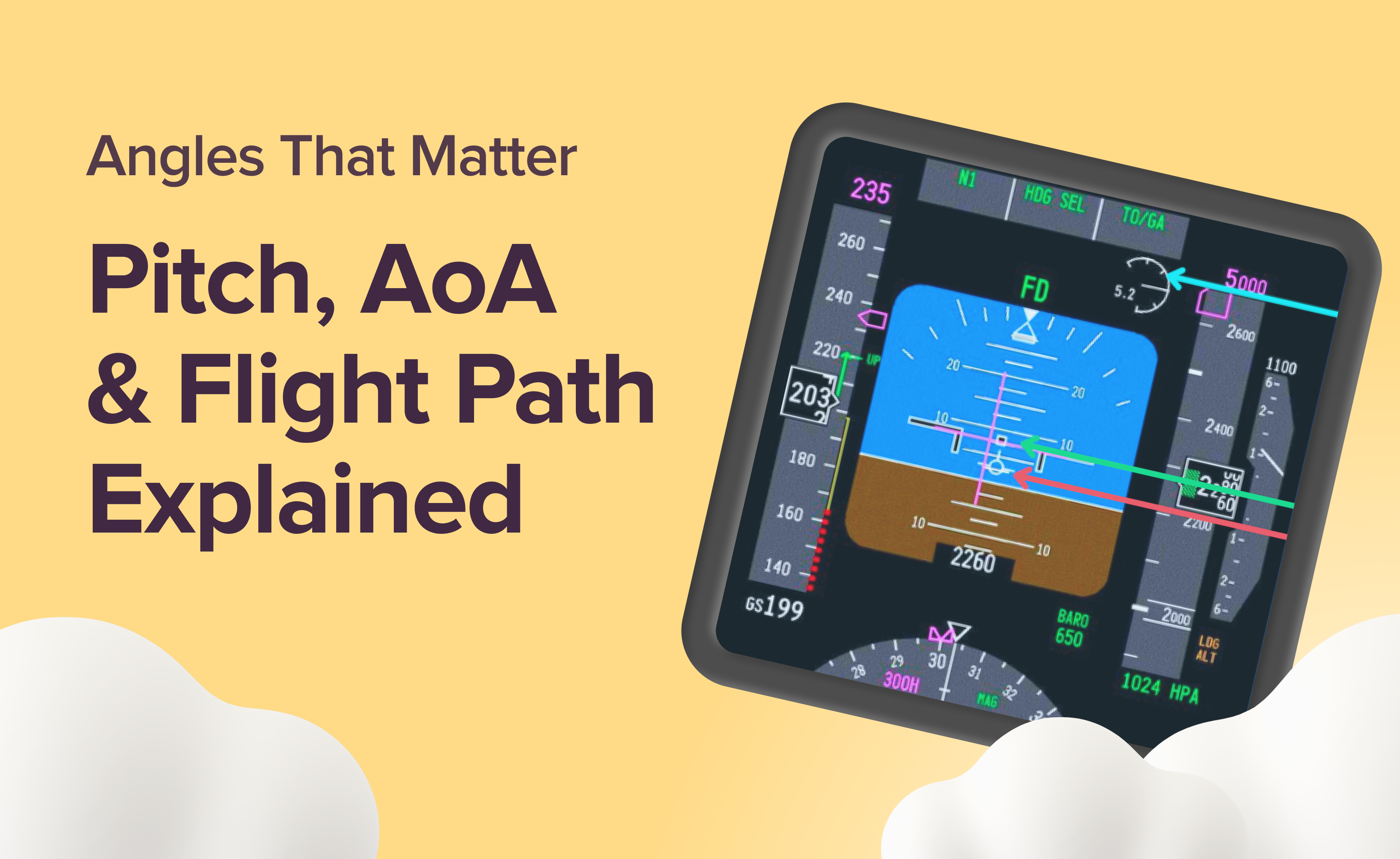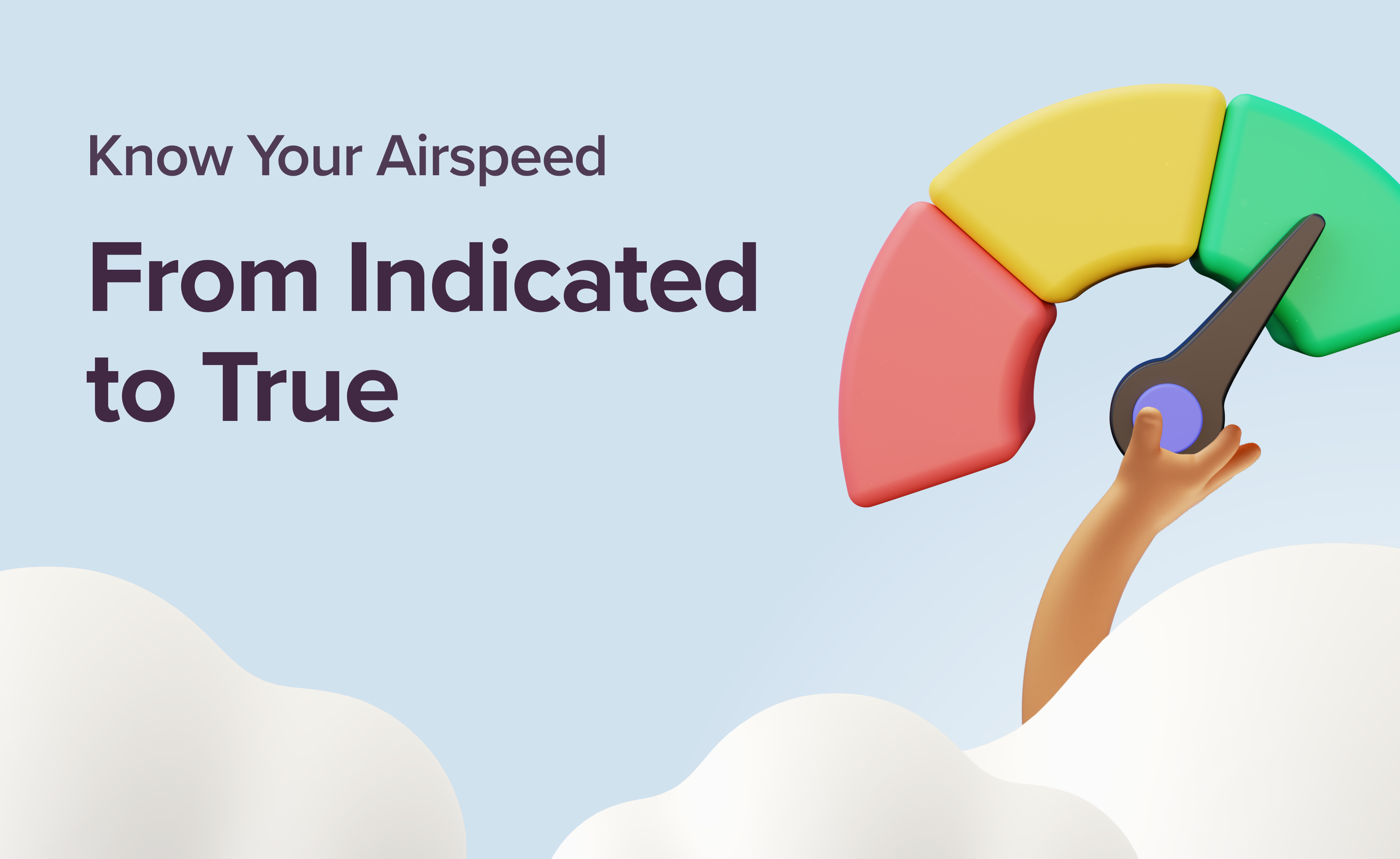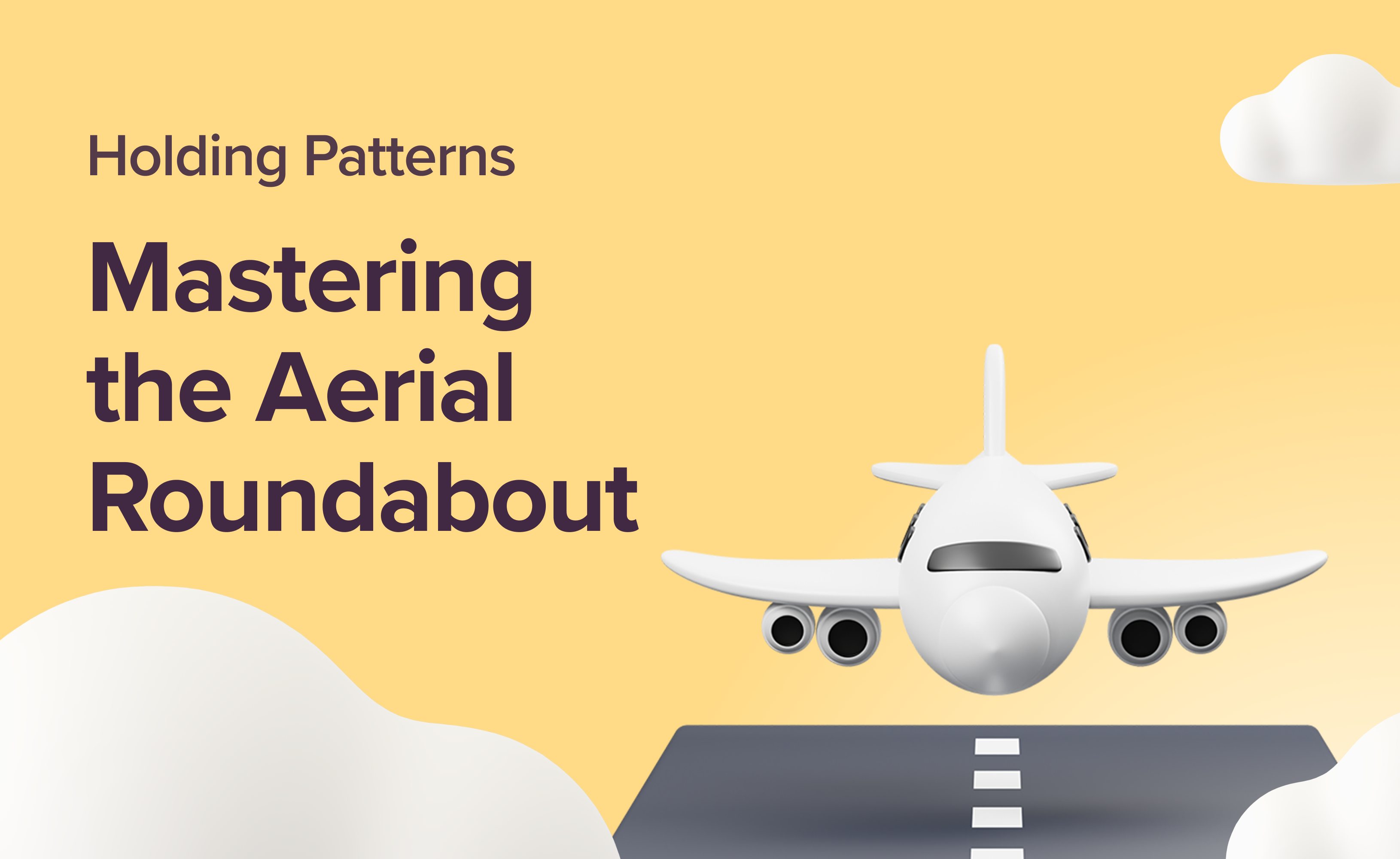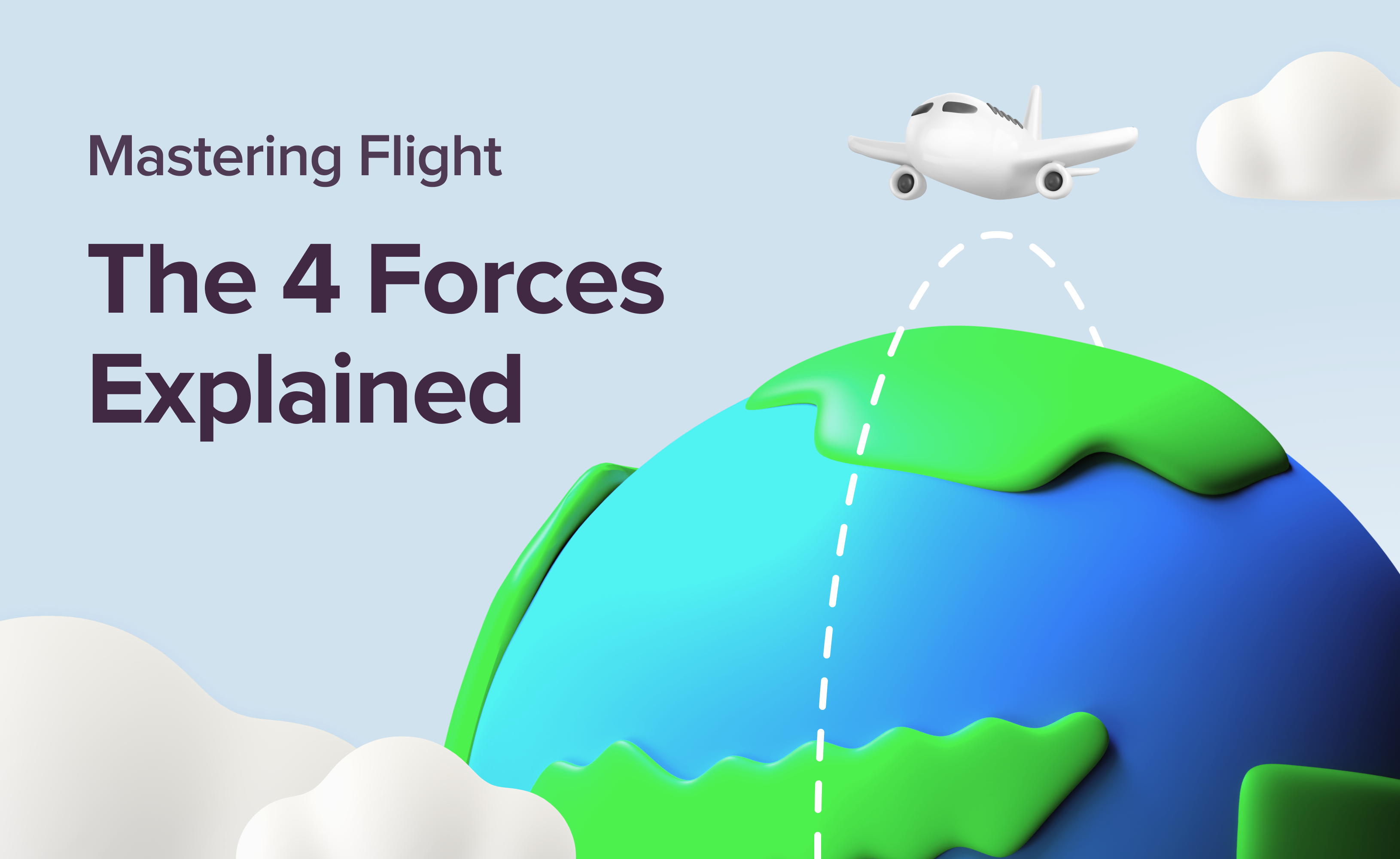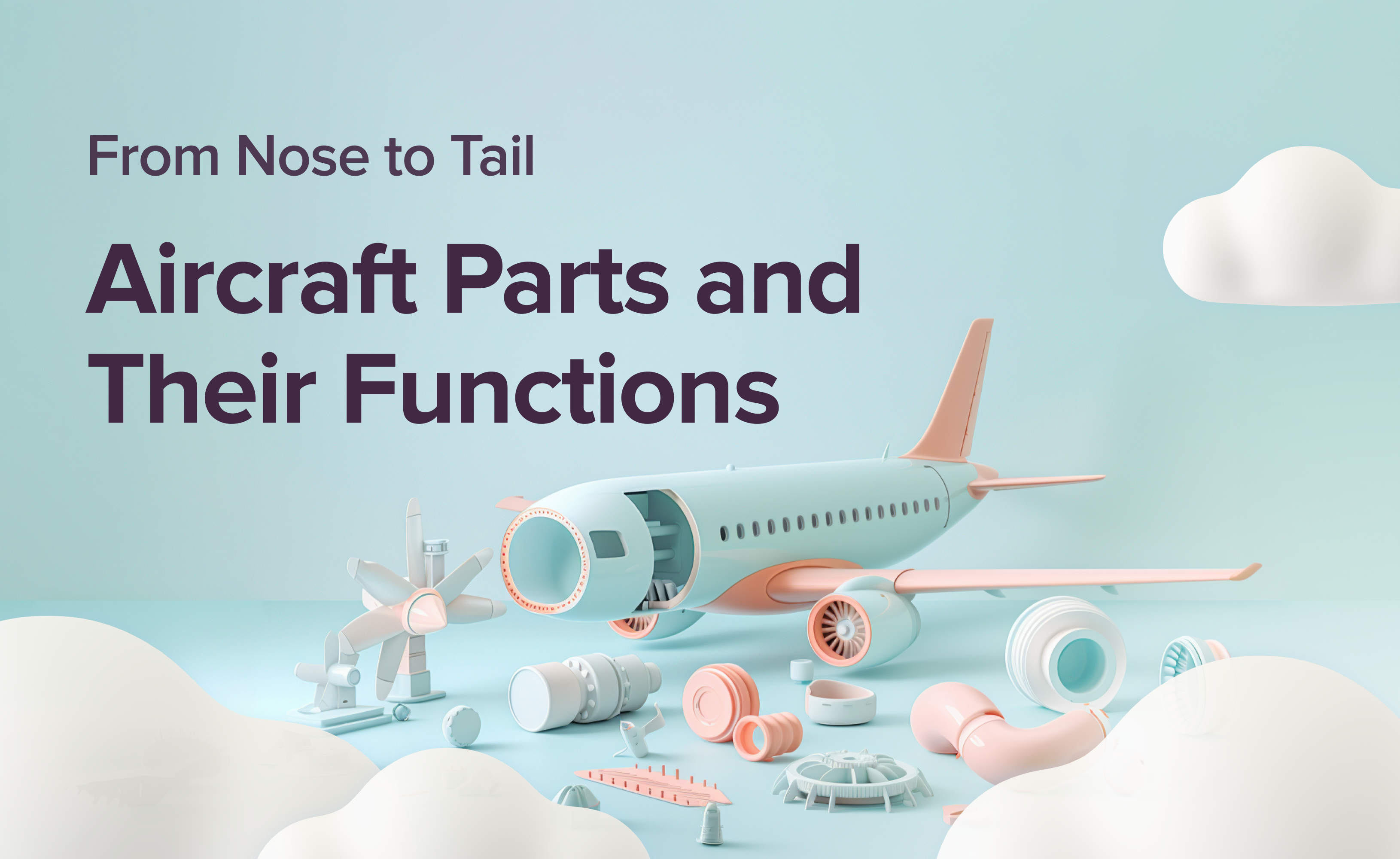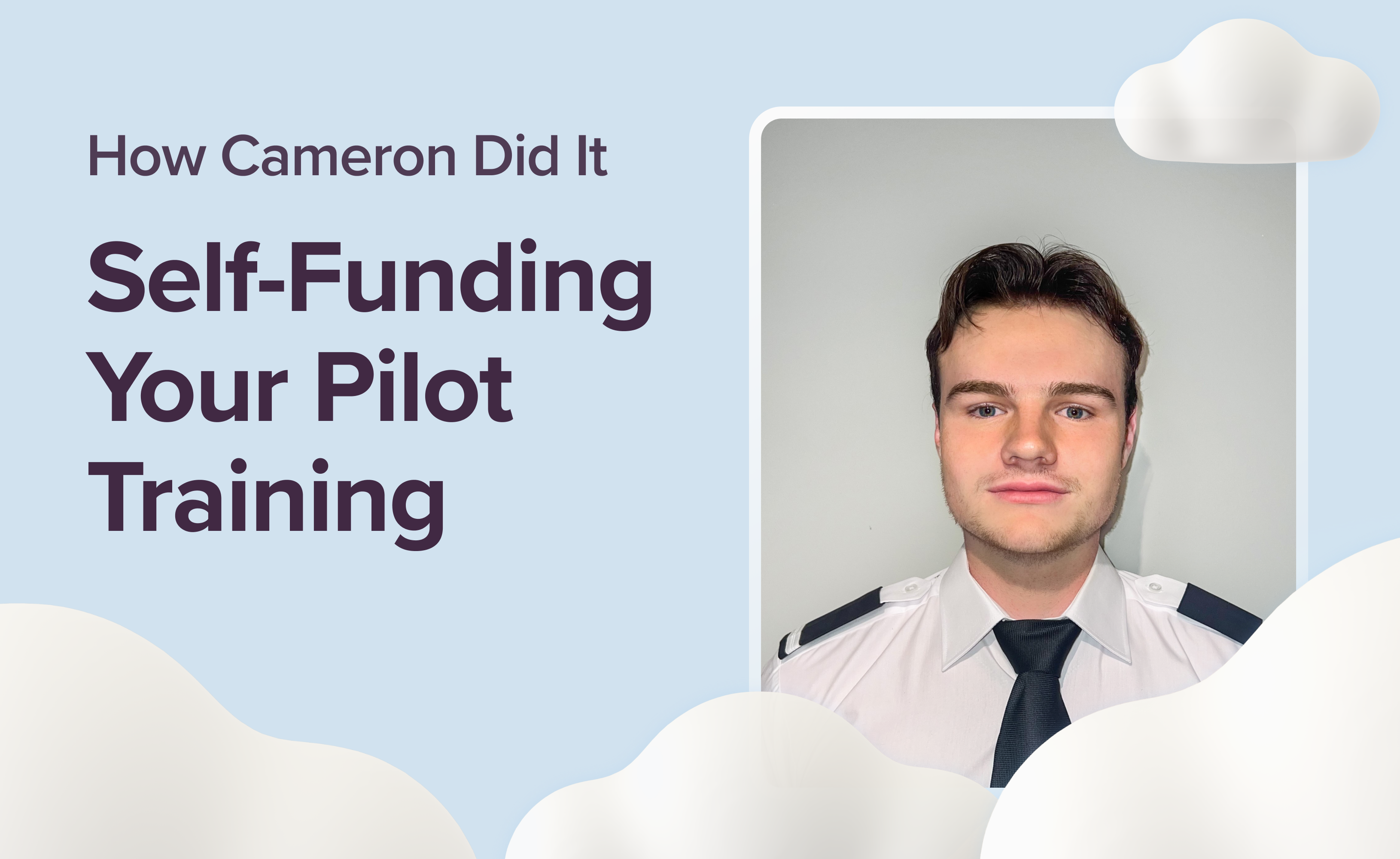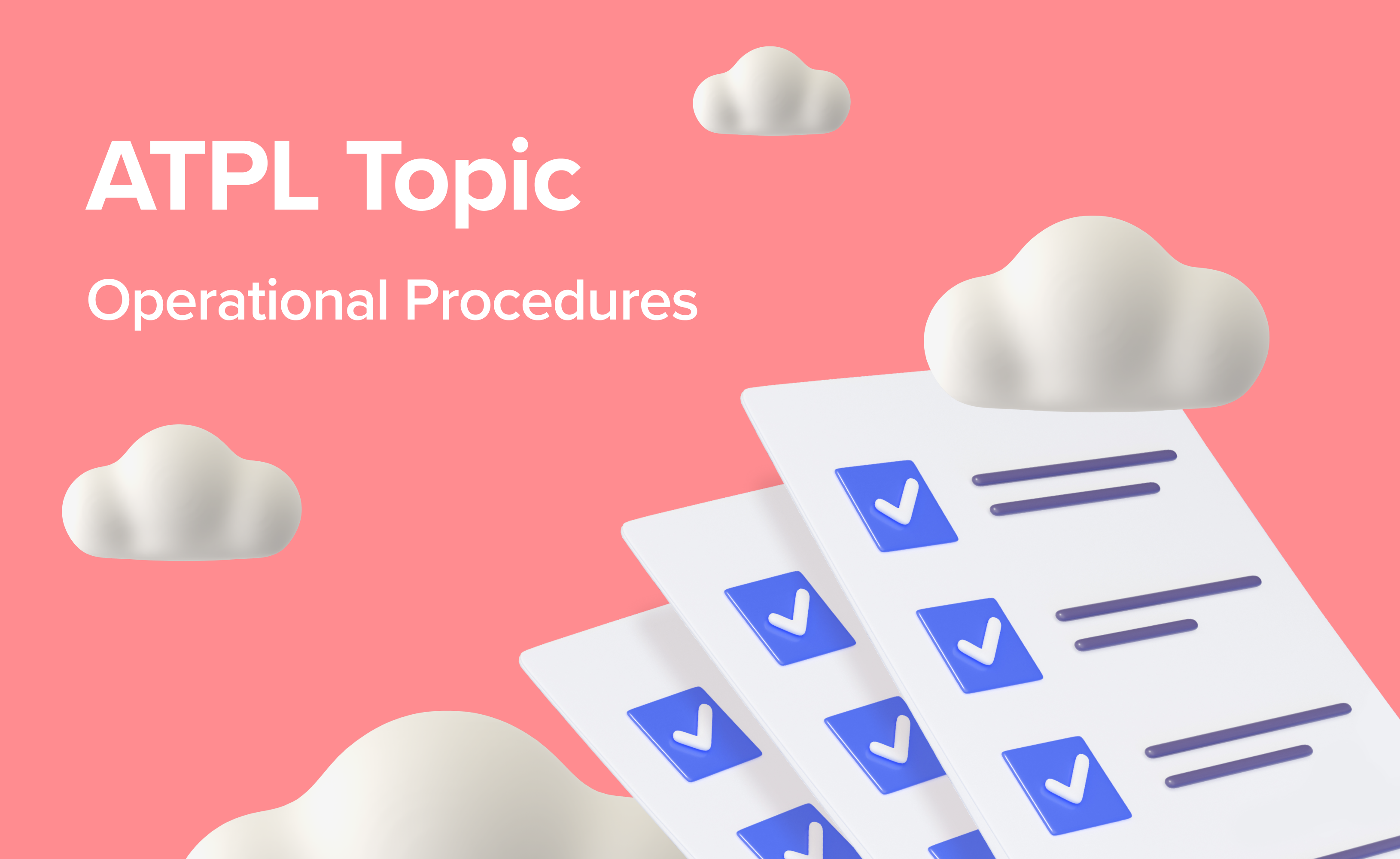The Dirty Dozen: 12 Critical Human Factors

If you’re a student pilot, you’ve likely heard the saying that around 70% of aviation accidents are attributed to Human Factors rather than technical failures. But what exactly are these Human Factors, and how do they influence our performance as pilots?
This is where the Dirty Dozen of Human Factors comes into play. These 12 human factors are responsible for a range of aviation incidents, and recognising them early will help you build safe, effective habits that will last throughout your career.
In aviation, accidents are rarely caused by a single, catastrophic error. Instead, they typically result from a chain of smaller, seemingly insignificant events. These factors don’t just affect flight operations; they’re increasingly a concern in maintenance operations and air traffic management. The lesson here? Even minor oversights can lead to major consequences because they slip under the radar and seem less dangerous.
To fully understand the impact of Human Factors, we need to consider the bigger picture, including the environments we operate in and the systems that regulate us. Let’s dive into the Dirty Dozen and explore how they apply to your journey as a student pilot and beyond.
What is the Dirty Dozen in Aviation?
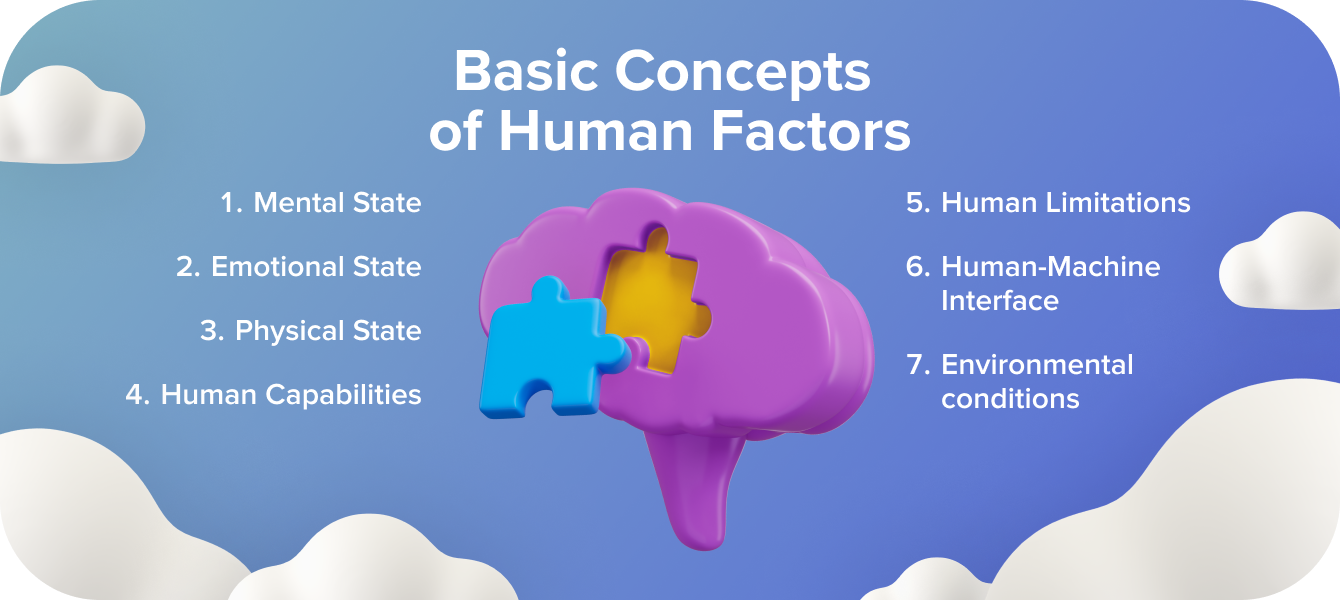
The Dirty Dozen refers to twelve common human factors that can negatively impact a person’s ability to perform tasks safely and efficiently in aviation. It was developed in 1993 by Gordon DuPont, while working for Transport Canada after it became evident that maintenance-related issues were responsible for many aviation accidents and incidents in the late 1980s and early 1990s. Although originally intended for aircraft maintenance, the Dirty Dozen has since become a fundamental concept across all aviation sectors, including flight operations, air traffic control, and cabin crew.
ICAO has identified over 300 human error precursors, but the Dirty Dozen remains a valuable tool for Human Factors training worldwide, particularly as an introduction to how human error can influence safety. Each Dirty Dozen element serves as a reminder of how human behaviour can lead to mistakes.
What makes the Dirty Dozen so important isn’t just its application to maintenance, but its relevance to aviation etiquette and overall pilot well-being. The way we communicate, handle stress, behave and work with others all fall under these human factors. Proper code of conduct in aviation — whether you're a student, seasoned pilot, air traffic controller, or cabin crew — means understanding how human errors can be mitigated through awareness and teamwork.
From communication to behaviour, there are unspoken rules that every pilot should know. Explore our guide, Pilot Etiquette: Unwritten Rules of the Skies, to ensure you're always flying the right way.
The Dirty Dozen Every Student Pilot Must Know

As a student pilot, the attitude you develop towards your training from the very beginning will shape your entire journey as a pilot. The Dirty Dozen, originally developed for aircraft maintenance, applies just as much to you as it does to seasoned professionals.
Understanding them is crucial to passing exams like the Human Performance and Limitations ATPL and becoming a safer and more aware pilot. The Dirty Dozen framework doesn't completely explain every incident, but it helps us reflect on our actions and how small decisions can cascade into bigger problems. Here is what, you’ll come across often in your training. These factors aren’t ranked in any particular order, nor is the list exhaustive:
Lack of communication
Distraction
Lack of resources
Stress
Complacency
Lack of teamwork
Pressure
Lack of awareness
Lack of knowledge
Fatigue
Lack of assertiveness
Norms
By keeping these factors in mind, you’ll approach every lesson, flight, and exam with the right mindset. From communicating clearly with your instructor to avoiding distractions and managing stress, these factors are crucial to shaping your growth as a safe, skilled pilot. Learn to recognise and overcome them early, and you’ll set yourself up for success in both your training and future career.
Want to go behind the scenes of the airline industry? Discover 20 insights from flight insiders in our latest blog post, Getting to Know the Airline Industry: 20 Insights from Flight Insiders.
1. Lack of Communication

Poor communication is one of the leading causes of accidents in aviation, where even small miscommunications can have serious consequences. In time-sensitive environments like flight operations, effective communication is crucial. Verbal communication is particularly challenging, with studies showing that we often retain only about 30% of the information conveyed. This leaves plenty of room for misinterpretation, especially when instructions are vague, assumptions are made, or unclear terminology is used.
To mitigate these risks, pilots use standardised words and phrases, along with the ICAO phonetic alphabet, to ensure clarity and prevent confusion.
Countermeasures:
Sort out essential information by delivering it at the beginning and end of the message.
Use checklists to provide structured communication and avoid misunderstandings.
Implement closed-loop communication, where the receiver repeats the message back to the sender to confirm understanding.
Always document tasks thoroughly and avoid assuming the next person will know what to do.
Struggling with ATPL Communications? Our expert guide is here to help! Learn key topics, practice with sample questions, and boost your confidence for exam success.
2. Distraction
Distraction refers to anything that diverts attention from the task at hand. In aviation, distractions are common and can range from loud noises to personal issues, or even procedural interruptions. For example, during aircraft maintenance, even a brief distraction can cause a technician to overlook a critical step, leading to serious safety risks.
External distractions, like interruptions or background noise, are often unavoidable, but personal distractions—such as phone calls, conversations, or stress — can be avoided. The issue with distractions is that they can cause a break in focus, and even when you return to the task, it’s easy to forget exactly where you left off.
Countermeasures:
If you’re interrupted, mark incomplete work as a reminder for yourself and others.
Avoid distractions in the workspace by reducing unnecessary noise or interruptions.
After a distraction, take a moment to retrace your steps before continuing.
Use checklists or ask a colleague to double-check your work for accuracy.
Conquer your fear of ATC communication! Discover practical tips and strategies in our blog post, Take On Your First ATC Calls: A Help Guide for Student Pilots.
3. Lack of Resources
In flight operations, a lack of resources can manifest as insufficient crew, inadequate fuel, outdated charts, or even a lack of proper weather data. Missing or limited resources typically lead to rushed decisions, which can jeopardise safety. For example, a pilot under pressure to meet a departure slot might skip a thorough pre-flight inspection or take-off without reviewing the latest weather update, thinking they can "catch up" later. These seemingly small oversights can have serious consequences in the air.
The quality of resources is just as important. Outdated navigational charts, inaccurate weather reports, or faulty equipment can lead to critical errors during flight. In aviation, there’s no room for cutting corners — precision is key, and the availability of proper resources is crucial for a safe operation. Ensuring you have access to the necessary data, tools, and support at every stage of flight is essential to maintaining high safety standards.
Countermeasures:
If critical resources (e.g., fuel, charts, weather data) are unavailable, delay the flight until they are secured.
Never proceed with a flight unless all equipment is fully operational and safe.
Immediately report any resource shortages to dispatch or supervisors to address the issue before it becomes a problem.
Plan flights with adequate time for proper preparation and review to avoid rushing or skipping essential steps.
4. Stress

Stress comes in two main forms: acute and chronic. Acute stress is triggered by immediate pressures — such as dealing with a sudden in-flight emergency, navigating through severe weather, or facing air traffic congestion during a critical phase like landing. These high-stress situations demand rapid, clear-headed decision-making, but stress can impair a pilot’s ability to process information quickly and effectively.
Chronic stress, on the other hand, builds up over time due to ongoing challenges, such as personal issues, family concerns, or financial difficulties. For pilots, chronic stress can also arise from consistently long flight hours, irregular schedules, or the pressure to meet strict deadlines.
Both types of stress affect a pilot's ability to focus, communicate, and make sound decisions under pressure.
Countermeasures:
Take regular breaks and manage workloads to reduce acute stress during flights.
Address chronic stress by maintaining a healthy work-life balance, seeking support when needed, and prioritising rest.
Communicate with your crew about any concerns—shared information can alleviate unnecessary pressure.
Engage in relaxation techniques, such as deep breathing or mindfulness, to stay calm in high-pressure situations.
Take care of yourself, take care of your flying. Discover the importance of pilot mental wellbeing in our latest blog post, Fly Well, Be Well: Prioritising Pilot Mental Wellbeing.
5. Complacency
Complacency occurs when individuals become overconfident or relaxed during routine tasks, leading to a loss of awareness of potential dangers. This is especially common with experienced personnel who may have performed the same tasks countless times and believe they no longer need to follow procedures closely.
In aviation, complacency can be deadly. Technicians may skip inspections because they assume everything is in working order, or pilots may neglect routine safety checks. Over time, this behaviour creates gaps in safety that, when combined, can lead to significant issues.
Countermeasures:
Always expect that something could be wrong, even with routine tasks.
Use checklists every time, no matter how familiar the task feels.
Cross-check work with a colleague to maintain vigilance and ensure nothing is overlooked.
Regularly refresh your training and knowledge to prevent complacency from setting in.
6. Lack of Teamwork
Aviation is fundamentally a team-based industry, with every role contributing to the safe operation of an aircraft. From flight crews to air traffic controllers and ground staff, seamless collaboration is crucial. A breakdown in teamwork can lead to missed details, incomplete tasks, and poor communication, all of which compromise safety.
The lack of teamwork between crew members can be particularly dangerous. For example, if the pilot and co-pilot don’t coordinate properly during take-off or landing, they may misinterpret each other’s actions, leading to confusion or errors.
Teamwork breakdowns often arise from miscommunication, unclear roles, or personal conflicts. These issues, when unresolved, can distract the team from their shared focus — safe flight operations.
Countermeasures:
Clearly define roles before the flight, ensuring every crew member understands their responsibilities.
Keep communication open and precise, using standardised terminology to avoid misunderstandings.
Address any personal conflicts outside of flight operations to ensure they don’t impact teamwork.
Foster a supportive crew culture where team members double-check each other’s work and offer assistance when needed.
Master the art of interpersonal skills in aviation. Explore our comprehensive guide, Soft Skills: The Foundation of Aviation Excellence, and learn how to excel in teamwork, communication, and more.
7. Pressure

The pressure to perform efficiently and without errors is constant. Whether it’s meeting tight schedules, completing maintenance to avoid flight delays, or adhering to demanding safety standards, pressure is a natural part of the job in aviation. However, too much pressure can overwhelm even the best people and result in rushed decisions, missed steps, faulty maintenance, or mistakes. The sources of pressure can vary: it might come from supervisors or passengers, but just as often, we put pressure on ourselves by overcommitting or trying to solve every problem.
Countermeasures:
Don’t rush to meet unrealistic deadlines. If necessary, ask for additional support or time.
Acknowledge whether the pressure is self-imposed or external, and address it accordingly.
Communicate openly with colleagues or supervisors if the time frame for a task feels unmanageable.
Set up tasks realistically to ensure each one is done thoroughly and safely.
8. Lack of Awareness
Lack of awareness, or situational awareness, refers to not fully understanding the context or potential consequences of a situation. This can be a dangerous oversight, leading to tunnel vision, where only part of the problem is addressed while other crucial aspects are ignored. Whether you’re flying or maintaining an aircraft, failing to see the bigger picture can result in missed signals, miscommunication, or poor decision-making.
Situational awareness requires continuous vigilance, scanning the environment, and thinking ahead. Without it, pilots and technicians alike can miss critical changes, such as deteriorating weather conditions, equipment malfunctions, or even simple procedural steps. This lack of attention to detail can quickly escalate into larger safety risks.
Countermeasures:
Ensure you fully understand all procedures before starting a task.
Continuously scan your surroundings for potential risks or changes.
Consider “what if” scenarios to anticipate challenges.
Encourage team members to double-check each other's work and challenge decisions when necessary.
9. Lack of Knowledge
A lack of knowledge can easily lead to poor decisions or unsafe actions, especially in a field as technically demanding as aviation. Without up-to-date information, proper training, and experience, pilots may misread instructions or fail to perform tasks correctly. Aircraft systems are complex, and outdated knowledge or working from memory can lead to costly errors.
A failure to acknowledge gaps in knowledge can also be dangerous. Many times, people are hesitant to ask for help or clarification, leading them to proceed with tasks they aren’t fully equipped to handle. In aviation, continuing education and staying informed about new systems and procedures are crucial for safety.
Countermeasures:
Always use current manuals and follow the most up-to-date procedures.
Don’t hesitate to ask for help or guidance if you're unsure about something.
Engage in ongoing professional development to stay informed.
Share your knowledge with colleagues and avoid making assumptions or working from memory.

10. Fatigue
Fatigue, both physical and mental, is a common issue in aviation. Long hours, intensive tasks, and stress can wear down even the most experienced professionals, leading to impaired judgement, slower reactions, and emotional instability. Fatigue makes us more prone to errors, particularly when dealing with complex or high-stakes situations, and can result in missing important details or making poor decisions.
One of the biggest challenges with fatigue is recognising it before it becomes dangerous. Many people tend to overestimate their ability to function under stress or fatigue, which can lead to risky decisions. In aviation, where attention to detail is critical, operating while fatigued can have serious consequences.
Countermeasures:
If you’re feeling fatigued, have someone else check your work to verify its accuracy.
Be mindful of signs of fatigue in yourself and colleagues, such as irritability, slow response times, or difficulty concentrating.
Avoid taking on complicated tasks when you know you’re exhausted, and ask for help when needed.
Focus on rest and recovery to maintain optimal mental and physical performance.

11. Lack of Assertiveness
Lack of assertiveness can occur when individuals don’t feel confident enough to express concerns or challenge decisions. In aviation, this can be extremely dangerous. A lack of assertiveness might lead to failure in reporting safety issues, questioning instructions, or providing feedback. When a person feels pressured to agree with others despite having doubts, it can result in unsafe decisions being made without proper scrutiny.
Assertiveness is about finding the balance between voicing concerns and respecting the opinions of others. It allows team members to communicate honestly and productively, ensuring that everyone’s input is valued. In an industry where safety is a collective responsibility, encouraging assertiveness is vital.
Countermeasures:
Always express your concerns or questions in a clear, respectful manner.
When you perceive a potential risk, speak up and provide feedback.
Encourage an open environment where everyone can voice opinions without fear of judgment.
Be receptive to feedback and encourage colleagues to speak up about concerns.
12. Norms
Norms refer to the established ways of doing things within a specific environment, often shaped by company culture and peer influence. While some norms promote efficiency, others can lead to unsafe practices. In aviation, norms that deviate from official procedures or safety regulations can become dangerous, especially when people cut corners or take shortcuts that aren’t aligned with best practices.
Even experienced professionals can fall into the trap of following unwritten rules rather than official guidelines, believing that if something has “always been done this way,” it must be acceptable. However, such norms can compromise safety. In aviation, following rigorous procedures is crucial, and deviating from them because of cultural norms can lead to accidents.
Countermeasures:
Adhere strictly to procedures and guidelines that have been tested and proven safe.
Be mindful that “the way things are usually done” might not always be the safest or most appropriate method.
Help foster a positive safety culture in which everyone follows the same standards.
Encourage others to challenge unsafe norms and promote a culture of adherence to official regulations.
Airhead's Takeaway

According to the 2020 EASA safety review, only 15 of 144 accidents in commercial air transport and air-taxi operations were caused by human error. Even better, there’s been a steady decrease in human factor-related accidents from 2016 to 2019. This is proof that, as pilots and aviation professionals, we’re learning and improving.
For you, as a student pilot, this highlights an important lesson: human error is inevitable, but it can be reduced — and your training is designed to help you do just that. From understanding your limitations to following procedures, everything you’re learning now is part of that progress.
The skies are safer because we’re more aware, more prepared, and more vigilant. So, as you move forward in your pilot journey, remember: it's about staying sharp, minimising mistakes, and ensuring that human error never leads to catastrophic consequences. Keep aiming high!







